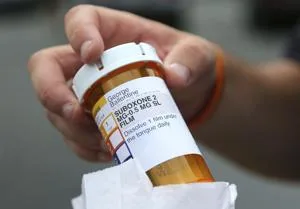
Pennsylvania counties strive to optimize the use of opioid settlement funds
Pennsylvania’s Opioid Crisis Settlement: Allocating $2 Billion Wisely
As the $2 billion Pennsylvania’s opioid crisis settlement begins being distributed across counties, state officials are strategizing the most effective utilization of these funds. The proportion of money to be spent lies chiefly in the hands of the counties, with approximately 70% of the total sum at their disposal.
Preliminary Findings from Elevate PA: A Mixed Approach
An ongoing study by the Penn State-led initiative, Elevate PA, indicates differing approaches to spending the settlement funds. While some counties are channeling the money towards a singular cause, others are spreading it across multiple initiatives. A ‘hybrid approach’ is also been considered by a few counties. More detailed spending data from Elevate PA is expected to be available by summer, according to Kristina Brant, Assistant Professor of Rural Sociology at Penn State.
The Pennsylvania Opioid Trust: Tracking Funds and Ensuring Transparency
The Pennsylvania Opioid Trust has set up several reporting requirements to monitor the flow of the settlement funds. While there has been concern regarding transparency in the board’s operations, Brant expresses less worry regarding transparency at the county level, as robust oversight is evident.
Decisions on Legitimate Spending
A recent board meeting of the Pennsylvania Opioid Trust sparked debate on whether purchasing a drug-sniffing dog for a county jail would constitute legitimate use of the funds. The board ultimately decided against such spending. Nevertheless, county officials are seeking greater clarity on permissible expenditures of the settlement money.
Challenges in Allocating Funds
According to initial interviews with county officials, conducted by Elevate PA, there is considerable confusion and anxiety about how best to utilize the settlement funds. A shared decision-making process is being favored to alleviate this pressure. However, this lack of clarity has led to reluctance in funding certain initiatives, such as fentanyl test strips or syringe exchanges.
The Focus on Recovery Services
Despite these challenges, counties are increasingly focusing on recovery services, such as in-jail treatment programs and housing support. This trend aligns with the objective of assisting individuals in reintegrating into society post medical treatment or incarceration. The balance between innovative and conventional uses of the funds remains a topic of ongoing discussion.
—
Read More US Lifestyle News
